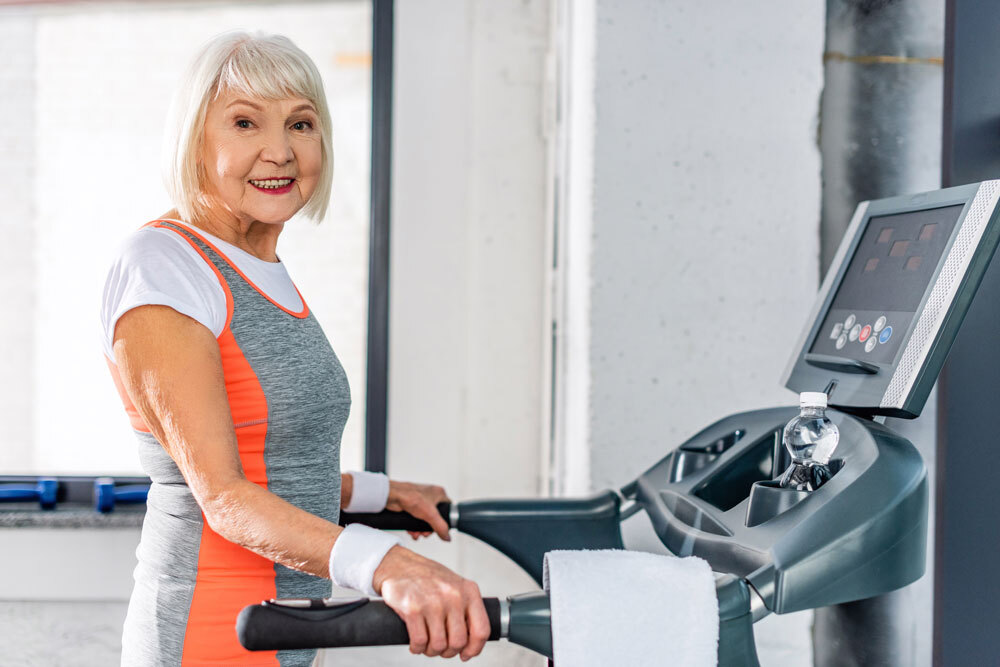Multiple sclerosis is a condition affecting the central nervous system, including the brain, optic nerves and spinal cord. It can potentially lead to issues concerning vision, sensory perception, and muscular coordination. Regular exercise may be recommended as part of treatment for multiple sclerosis.
Rehabilitation for MS includes physical therapy and exercise program for your own needs, education and other rehabilitation therapies to improve overall well-being, prevent disability and new complications.
The signs of this condition varies among individuals, with some experiencing mild effects, while others contend with severe symptoms hindering their ability to carry out routine activities. Do talk to your doctor before starting your exercise program.

Exercise for Multiple Sclerosis
While excessive exercise can exacerbate fatigue in patients with MS, engaging in mild but regular exercise tailored to your own individual needs can be highly beneficial. Consistently engaging in physical activity is crucial for people with MS, as a lack of movement can worsen symptoms such as stiffness, weakness, pain, fatigue, and more. Additionally, some individuals with MS may encounter tremors, marked by involuntary shaking.
A personalized and supervised exercise regimen has the potential to enhance fitness levels, functional capacity, and quality of life for individuals with MS, while also addressing manageable impairments.
While consistent aerobic exercise can enhance strength and balance, as well as improve bowel and bladder control, while also reducing spasticity cause by multiple sclerosis, it’s essential to approach it gently to avoid potential setbacks. Engaging in overly vigorous exercise isn’t imperative for achieving better health outcomes. Studies indicate that even moderate exercise can yield advantages in areas such as balance, fatigue reduction, fitness levels, and overall quality of life.
Why is stretching important for MS?
Flexibility involves stretching the muscles and tendons to their maximum extent and moving the joints through their complete range of motion. These actions reduce muscle tightness and help prevent the loss of full range of motion, which can happen due to reduced activity, weakness, or spasticity.
The main goal of flexibility exercises include elongating the muscles, improving joint flexibility, minimizing spasticity, and sustaining proper posture and balance.
Yoga and stretching exercise can help tremendously with multiple sclerosis signs. This involves incorporating gentle stretching movements that target each joint, maximizing their range of motion. It may help to enhance your flexibility and reduce muscle stiffness, leading to a more comfortable experience.
Consistently engaging in physical activity is crucial for people with MS, as a lack of movement can worsen symptoms such as stiffness, weakness, pain, fatigue, and more. Additionally, some individuals with MS may encounter tremors, marked by involuntary shaking.
While there is no one thing or exercise that could cure your multiple sclerosis, it is highly manageable. The right restorative therapies can can mitigate the impact of MS and contribute to sustaining or enhancing your quality of life.
Resources:
Multiple Sclerosis: What You Need to Know https://intermountainhealthcare.org/
Exercise and multiple sclerosis https://www.mayoclinic.org/
Exercise prescription for patients with multiple sclerosis; potential benefits and practical recommendations https://www.ncbi.nlm.nih.gov/pmc/articles/PMC5602953/#:~:text=MS%20patients%20can%20positively%20adapt,fall%20rates%20and%20better%20balance.
Yoga for MS https://www.mssociety.org
This content comprises informative and educational resources only and can not be considered as a substitute for professional health or medical guidance. Reliance on any information provided in this article is solely at your own risk. If you have any inquiries or apprehensions about your medical condition or health goals, talk with a licensed physician or healthcare provider.






Leave A Comment